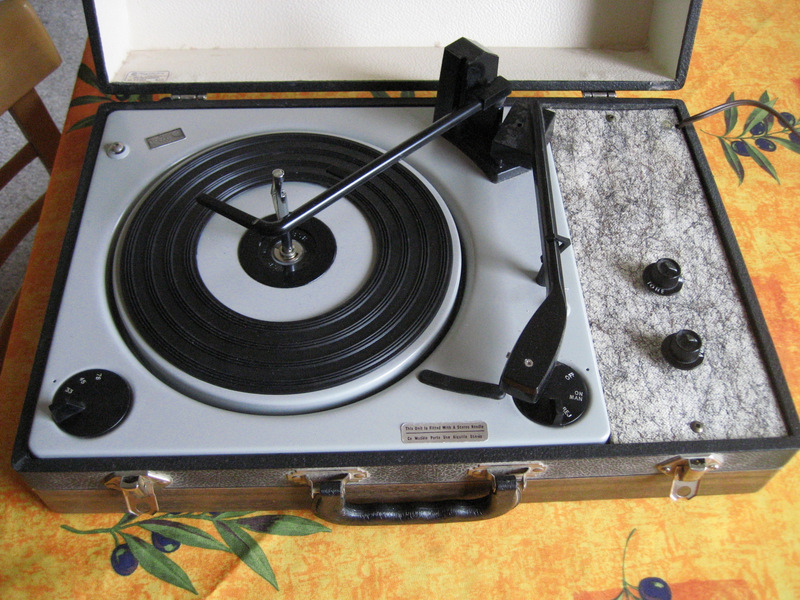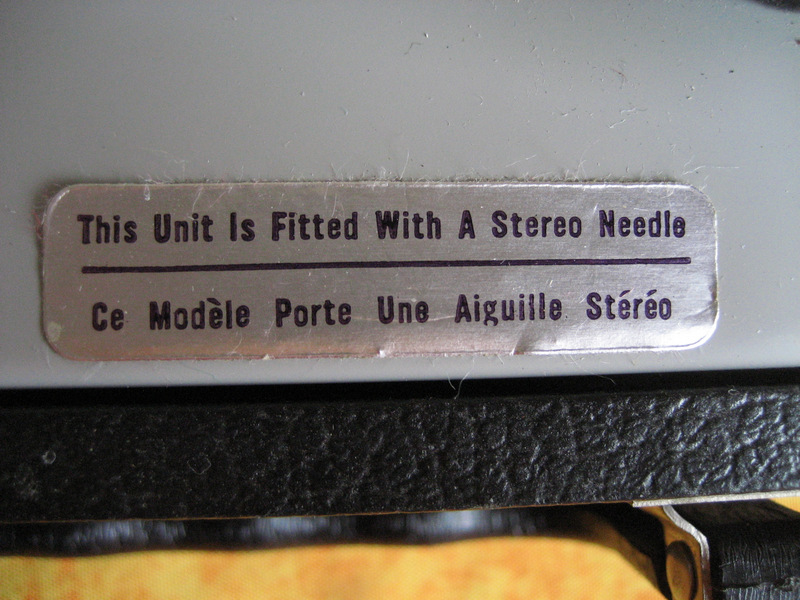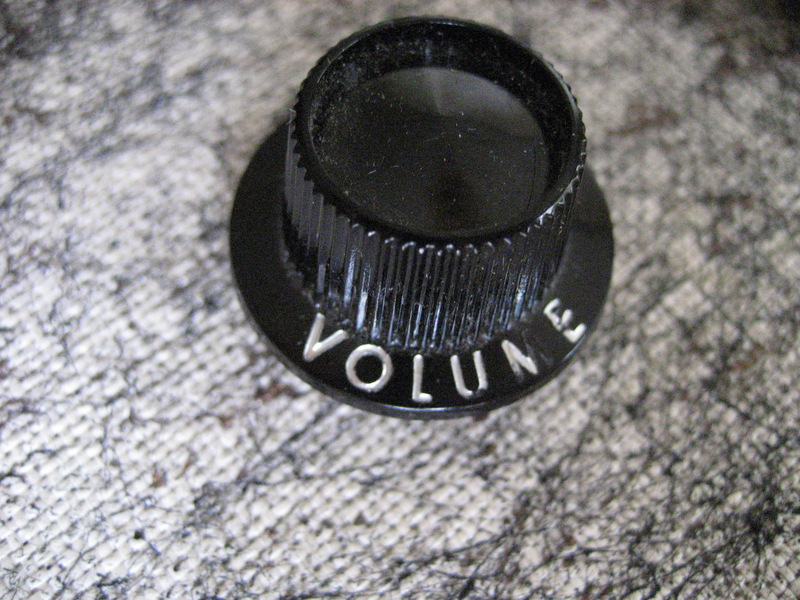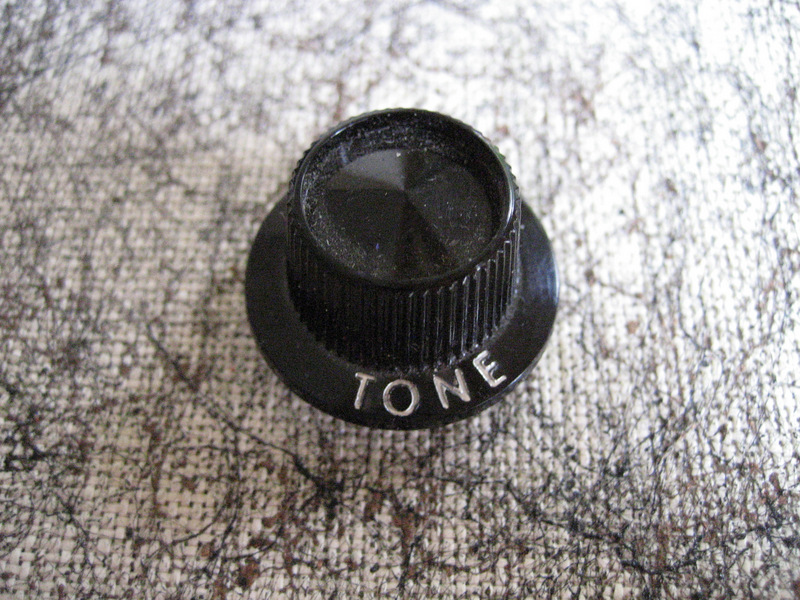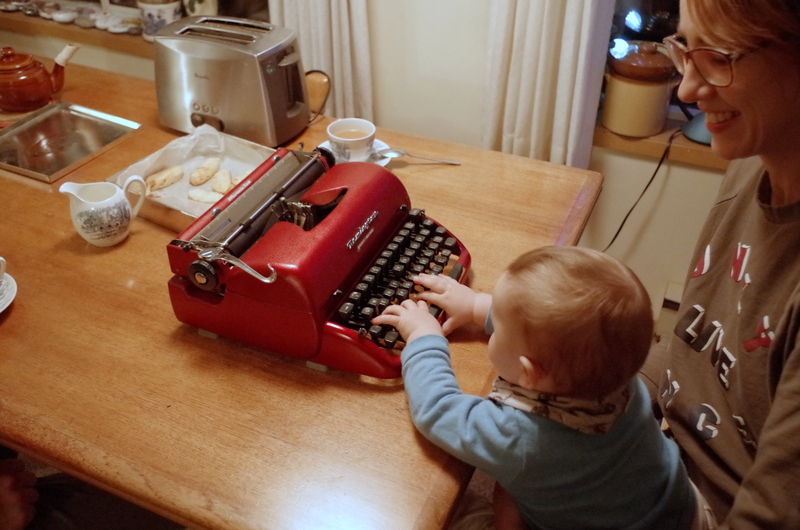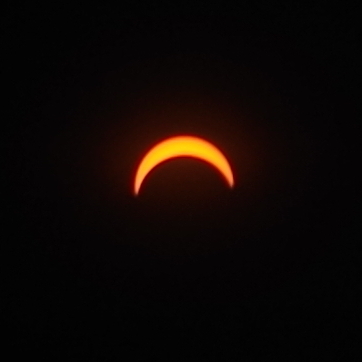
I just added another old Eaton’s phonograph to the collection, the Eaton’s “Roamer’ (model 50-26), made by Dominion Electrohome Industries, the company that I assume later became simply Electrohome. A previous post covered the Eaton’s 703. Presumably you could roam about with this neat little unit in hand, taking it over to a friend’s apartment to listen to the latest music:

It’s hard to determine the date it was made, but my guess is the 1940’s, before the advent of the LP, since this machine is made to play 78’s. It was on the shelf with the electronics at the thrift shop, where I spotted it immediately from the old style box and handle. The power cord was cut off so there was no way to test it, but for twenty bucks I decided it was worth a gamble. I saw from peeking into the underside that there were two vacuum tubes, so I figure that if it didn’t work I could convert it into a 5 watt guitar amp. However, after I soldered on a new power cord it did indeed work. The tubes began to glow and a loud hum was heard from the speaker. I put some silicone lube on the platter spindle and the platter began to turn very fast.

Looking at the pickup I noted an offset stylus with some sort of dark point, that I assumed to be the sapphire, or some such thing. The pickup itself was made by Shure. With it humming and the platter spinning around quickly I reached for the nearest 78 album, and grabbed the first disc in the set – Xavier Cugat’s Waldorf-Astoria Orchestra playing Begin the Beguine.

How appropriate – my parents spent their honeymoon at the Waldorf Astoria in 1947. Maybe they even danced in the ballroom while Cugat’s orchestra played this song. Compared to my much older windup 78 phonograph, this one is high fidelity. It certainly does explain how those recording engineers managed to get decent quality edits from old recordings that exist only on 78’s from that era. They manufactured these discs with the highest technology of the time, as explained here:

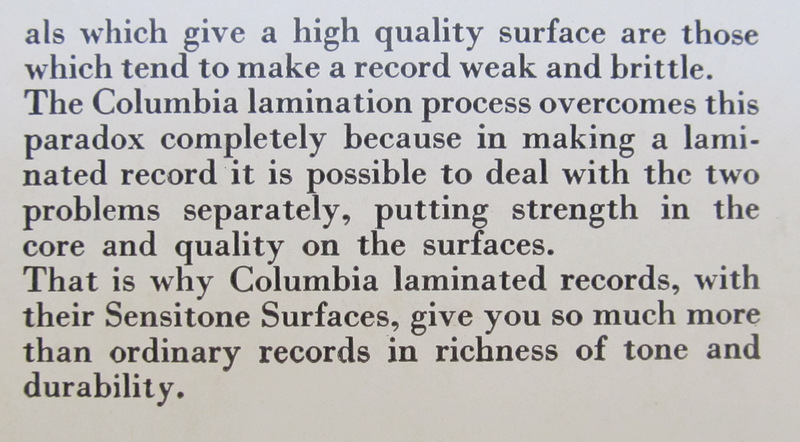
Now here is – Begin the Beguine.

